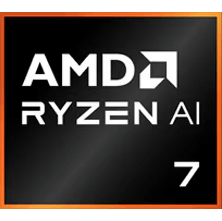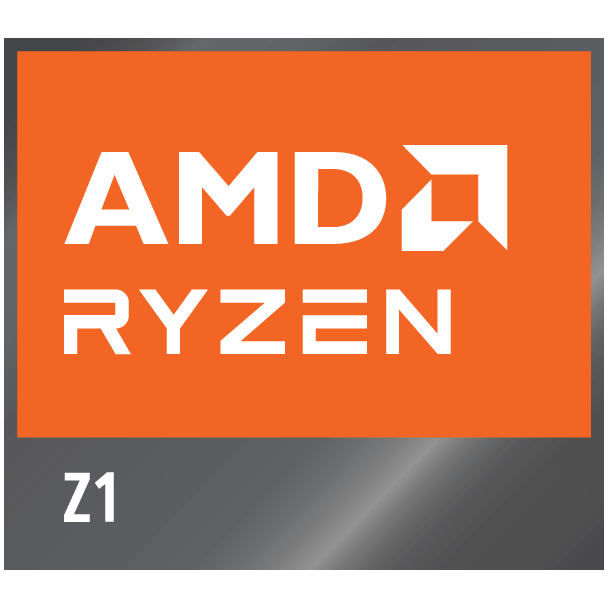Intel Core i5 7300HQ vs AMD Ryzen AI 7 Pro 360
We compared two laptop CPUs: Intel Core i5 7300HQ with 4 cores 2.5GHz and AMD Ryzen AI 7 Pro 360 with 8 cores 2.0GHz . You will find out which processor performs better in benchmark tests, key specifications, power consumption and more.
Main Differences
Intel Core i5 7300HQ 's Advantages
Higher base frequency (2.5GHz vs 2.0GHz)
Lower TDP (45W vs 54W)
AMD Ryzen AI 7 Pro 360 's Advantages
Released 7 years and 9 months late
Better graphics card performance
Higher specification of memory (8000 vs 2400)
Larger memory bandwidth (89.6GB/s vs 37.5GB/s)
Newer PCIe version (4.0 vs 3.0)
Larger L3 cache size (16MB vs 6MB)
More modern manufacturing process (4nm vs 14nm)
Score
Benchmark
Cinebench R23 Single Core
Intel Core i5 7300HQ
877
AMD Ryzen AI 7 Pro 360
+123%
1957
Cinebench R23 Multi Core
Intel Core i5 7300HQ
3125
AMD Ryzen AI 7 Pro 360
+341%
13793
Geekbench 6 Single Core
Intel Core i5 7300HQ
594
AMD Ryzen AI 7 Pro 360
+349%
2669
Geekbench 6 Multi Core
Intel Core i5 7300HQ
2136
AMD Ryzen AI 7 Pro 360
+458%
11926
Passmark CPU Single Core
Intel Core i5 7300HQ
1960
AMD Ryzen AI 7 Pro 360
+100%
3933
Passmark CPU Multi Core
Intel Core i5 7300HQ
5063
AMD Ryzen AI 7 Pro 360
+324%
21490
General Parameters
Jan 2017
Release Date
Oct 2024
Intel
Manufacturer
Amd
Laptop
Type
Laptop
x86-64
Instruction Set
x86-64
Kaby Lake
Core Architecture
Zen 5 (Strix Point)
i5-7300HQ
Processor Number
-
BGA-1440
Socket
FP8
HD Graphics 630
Integrated Graphics
Radeon 880M
-
Generation
Ryzen AI 7 (Zen 5 (Krackan Point))
Package
-
Transistor Count
14 nm
Manufacturing Process
4 nm
45 W
Power Consumption
15-54 W
-
Max Turbo Power Consumption
W
100 °C
Peak Operating Temperature
100 °C
-
Foundry
TSMC
-
I/O Process Size
6 nm
CPU Performance
4
Performance Cores
3
4
Performance Core Threads
6
2.5 GHz
Performance Core Base Frequency
2.0 GHz
3.5 GHz
Performance Core Turbo Frequency
5 GHz
-
Efficiency Cores
5
-
Efficiency Core Threads
10
-
Efficiency Core Base Frequency
2.0 GHz
-
Efficiency Core Turbo Frequency
3.3 GHz
4
Total Core Count
8
4
Total Thread Count
16
100 MHz
Bus Frequency
100 MHz
25x
Multiplier
20
64 K per core
L1 Cache
80 K per core
256 K per core
L2 Cache
1 MB per core
6 MB shared
L3 Cache
16 MB shared
No
Unlocked Multiplier
No
-
SMP
1
Memory Parameters
DDR4-2400, LPDDR3-2133, DDR3L-1600
Memory Types
DDR5-5600,LPDDR5X-8000
64 GB
Max Memory Size
256 GB
2
Max Memory Channels
2
37.5 GB/s
Max Memory Bandwidth
89.6 GB/s
No
ECC Memory Support
Yes
Graphics Card Parameters
true
Integrated Graphics
true
350 MHz
GPU Base Frequency
800 MHz
1000 MHz
GPU Max Dynamic Frequency
2900 MHz
192
Shader Units
768
24
Texture Units
48
3
Raster Operation Units
32
24
Execution Units
12
15 W
Power Consumption
15
4096x2304 - 60 Hz
Max Resolution
-
0.44 TFLOPS
Graphics Performance
4.45 TFLOPS
AI Accelerator
-
NPU
AMD Ryzen™ AI
-
Theoretical performance
50 TOPS
Miscellaneous
3.0
PCIe Version
4.0
16
PCIe Lanes
16
SSE4.1, SSE4.2, AVX-2
Extended Instruction Set
-







